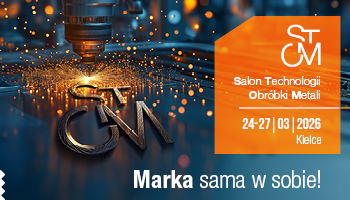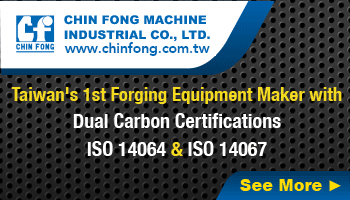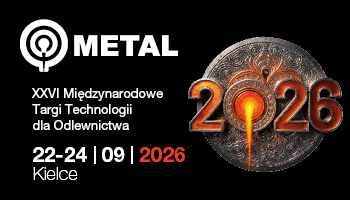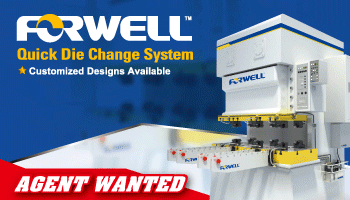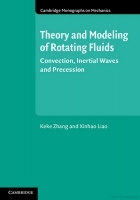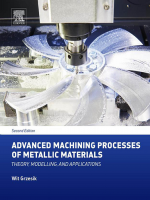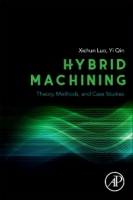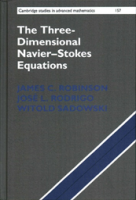Hybrydowe procesy kształtowania wyrobów, integrujące techniki przyrostowe i ubytkowe *
Hybrid manufacturing of metallic parts integrated additive and subtractive processes
Author: Wit Grzesik
Mechanik nr 07/2018 - Obróbka - inne rodzaje
STRESZCZENIE: Przedstawiono nową koncepcję hybrydowego kształtowania złożonych wyrobów, bazującą na integracji techniki przyrostowej oraz wykańczającej obróbki ubytkowej na jednej obrabiarce CNC. Ta koncepcja jest intensywnie rozwijana w ramach strategii Produkcja/Wytwarzanie 4.0. Podano zasady i możliwości technologiczne integracji laserowego napawania proszkowego i wykańczającego toczenia/frezowania w różnych zastosowaniach przemysłowych, takich jak: kształtowanie przyrostowe dodatkowych elementów w złożonych geometrycznie wyrobach, nanoszenie warstw funkcjonalnych oraz naprawa zużytych lub uszkodzonych, dużych i drogich elementów, np. łopatek i obudów turbin lotniczych. Omówiono stosowane strategie technologiczne, programy CAD/CAM i rozwiązania konstrukcyjne obrabiarek hybrydowych CNC.
SŁOWA KLUCZOWE: obróbka hybrydowa, obróbka przyrostowa, obróbka ubytkowa CNC, naprawa części, obrabiarki hybrydowe
ABSTRACT: This review paper highlights the hybrid manufacturing processes which integrate the additive and subtractive processes performing on one hybrid platform consisting of the LMD (laser metal deposition) unit and multi-axis CNC machining center. This hybrid technology is rapidly developed and has many applications in Production/Manufacturing 4.0 including the LRT (laser repair technology). In particular, some important rules and advantages as well as technological potentials of the integration of a powder metal deposition and finishing CNC milling/turning operations are discussed and overviewed. Some representative examples such as formation of difficult features around the part periphery, deposition of functional layers and coatings and repair of high-value parts in aerospace industry are provided. Moreover, the technological strategies, CAD/CAM and CAI programs and construction designs of the hybrid manufacturing platforms are explained. Some conclusions and future trends in the implementation of hybrid processes are outlined.
KEYWORDS: hybrid machining, additive machining, CNC machining, repair technology, hybrid machine tools
BIBLIOGRAFIA / BIBLIOGRAPHY:
- Grzesik W. „Hybrydowe procesy obróbki ubytkowej. Definicje, zasady tworzenia i znaczenie w przemyśle”. Mechanik. 91, 5–6 (2018): s. 338.
- Grzesik W. „Wizje i strategie wytwarzania”. Cz. I i II. Mechanik. 83, 3 (2010): s. 145–148 (cz. I), 4 (2010): s. 232–239 (cz. II).
- Grzesik W. „Podstawy skrawania materiałów konstrukcyjnych”. Warszawa: PWN, 2018.
- Jones J.B. “The synergies of hybridizing CNC and additive manufacturing”. Hybrid Manufacturing Technologies Ltd, 2014.
- Manogharan G., Wysk R., Harrysson O., Aman R. “AIMS – a metal additive hybrid manufacturing system: system architecture and attributes”. Procedia Manufacturing. 1 (2015): s. 273–286.
- Mazak’s VC-500 AM Hybrid Speeds Multitasking, Additive Manufacturing (2016), www.mazak.com.
- Additive manufacturing in milling quality, 2017, www.dmgmori.com.
- Reclaim Project – Remanufacturing the Future, 2012, www.catapult.org.uk.
- Sottak T. “Hybrid Manufacturing. 3D printed metals – core applications”. www.optomec.com.
- Nagel J.S., Liou F.W. “Hybrid manufacturing system. Design and Development”. Manufacturing Systems (Chapter 11), ed. F.A. Aziz, InTech Europe, Rijeka, 2012.
- Du W., Bai Q., Zhang B. “A novel method for additive/subtractive hybrid manufacturing of metallic parts”. Procedia Manufacturing. 5 (2016): s. 1018–1030.
- Flynn J.M., Shokrani A., Newan S.T., Dhokia V. “Hybrid additive and subtractive machine tools – research and industrial developments”. Int. Journal of Machine Tools & Manufacture. 101 (2016): s. 79–101.
- Liu J., Wang X., Wang Y. “A complete study on satellite thruster structure (STS) manufactured by a hybrid manufacturing (HM) process with integration of additive and subtractive manufacture”. Int. Journal of Advanced Manufacturing Technology. 92 (2017): s. 4367–4377.
- Schmidt M., Merklein M., Bourell D., Dimitrov D., Hausotte T., Wegener K., Overmeyer L., Vollerstsen F., Levy G.N. “Laser based additive manufacturing in industry and academia”. CIRP Annals – Manufacturing Technology. 66, 2 (2017): s. 561–583.
- Norfolk M. “The top 5 reasons hybrid additive manufacturing make sense”, 2018, www.fabrisonic.com.
- Hudson R. “Hybrid system combines additive and subtractive manufacturing”, www.mitsuiseiki.com.
- Yamazaki T. “Development of a hybrid multi-tasking machine tool: integration of additive technology with CNC machining”. Procedia CIRP. 42 (2016): s. 81–86.
- Laser Deposition Technology (LDT): Examples. www.rpm-innovations.com.
- Technology Spotlight: Hybrid additive/subtractive machining centre, 2018, Matsuura Machinery, www.matsuurausa.com.
- Lee W., Wei Ch., Chung S. “Development of a rapid prototyping system using low-cost fused deposition modeling and five-axis machining”. Journal of Materials Processing Technology. 214 (2014): s. 2366–2374.
- Hybrid Manufacturing. “The world’s first hybrid turbine blade & turbo fan remanufacturing machine”, www.hamuel.com.
- Zhang X., Li W., Chen X., Cui W., Liou F. “Evaluation of component repair using direct metal deposition from scanned data”. Int. Journal Advanced Manufacturing Technology. 95 (2018): s. 3335–3348.
- Przestacki D., Chwalczuk T., Wojciechowski S. “The study on minimum uncut chip thickness and cutting forces during laser-assisted turning of WC/NiCr clad layers”. Int. Journal of Advanced Manufacturing Technology. 91 (2017): s. 3887–3898.
- Merklein M., Junker D., Schaub A., Neubauer F. “Hybrid additive manufacturing technologies – an analysis regarding potential and applications”. Physics Procedia. 83 (2016): s. 549–559.
DOI: https://doi.org/10.17814/mechanik.2018.7.58
* Artykuł recenzowany


.jpg)
